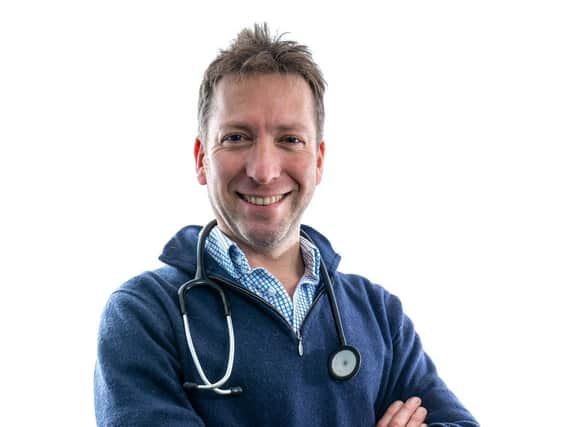The Yorkshire Vet Julian Norton pulls rank on his accomplice, fellow vet Matt at a donkey castration


The anaesthetic is not quite as simple as it would be in a horse and the existence of extra blood vessels down there demands ligation as well as the usual clamping action with a special tool called an emasculator.
So, when I got a message from a client who needed help with her donkey, it was not exactly the proverbial, and now literal, pain in the ass; but I did need a second pair of hands.
Advertisement
Hide AdAdvertisement
Hide AdLuckily, I have a partner in crime – or at least an accomplice in all things donkey – and I was quick to send him a message.
It wasn’t quite an SOS, but I was pleased when Matt offered an immediate and affirmative response. Matt is a vet from the heart of West Yorkshire, with whom I’ve worked on a few occasions. The first was during an early episode of Springtime on the Farm, when we were both “expert presenters”.
We chuckled about this moniker all afternoon, because neither of us fitted either part of the description. The next time we worked together was when I needed help with a donkey called Gary.
He had a growth on his penis that needed to be removed under GA. Matt, whose practice was close by, was happy to lend a hand.
Advertisement
Hide AdAdvertisement
Hide AdThe procedure, which could have been very stressful, went smoothly with Matt’s calm and competent assistance at the anaesthetic end. He was full of the natural enthusiasm of youth and I really enjoyed working with him. He was the natural choice for an assistant for another donkey event.
We arrived at more or less the same time and I was delighted to see that Matt had brought a huge selection of extra kit, packed into a capacious fishing box. No piece of equipment had been left behind (except for the fishing tackle) and no eventuality would see us short of drugs or instruments.
We had to decide which of us would do the surgery and who would do the anaesthetic. The historical hierarchy of vets dictates that the more senior vet does the cutting while the junior one ensures the patient stays asleep. Over my career, I’ve been the junior on too many occasions, with the almost-always-challenging job of sedating a boisterous/wild yearling and maintaining anaesthesia for the duration of the procedure.
It is always more stressful and more prone to problems than the role of the surgeon. Today, with my hair thinning and greying at an alarming rate, seemed the perfect time to pull rank.
Advertisement
Hide AdAdvertisement
Hide AdWe pondered doses and drug combinations and junior Matt drew up the appropriate combinations into syringes of various sizes and aimed for the jugular. Before we knew it, the donkey was asleep and the surgery was done. It couldn’t have gone more perfectly.
Clearly impressed at the efficiency of our new partnership, the donkey’s canny owner had another idea.
“We have this colt over here, too. I’ve been meaning to get him gelded for a while. You don’t fancy doing him as well while you’re here do you lads?”
He gestured to a loose box across the yard. We couldn’t turn down another challenge and went to have a look over the stable door.
Advertisement
Hide AdAdvertisement
Hide AdInside, was a strong and stocky-coloured cob, who immediately swung his back end in my direction and kicked the inside of the stable door so hard that it must have dented the wood.
“There you go, Julian,” said Matt as he handed the bottles and syringes over with a large grin. “It’s your turn to do the sedation.”